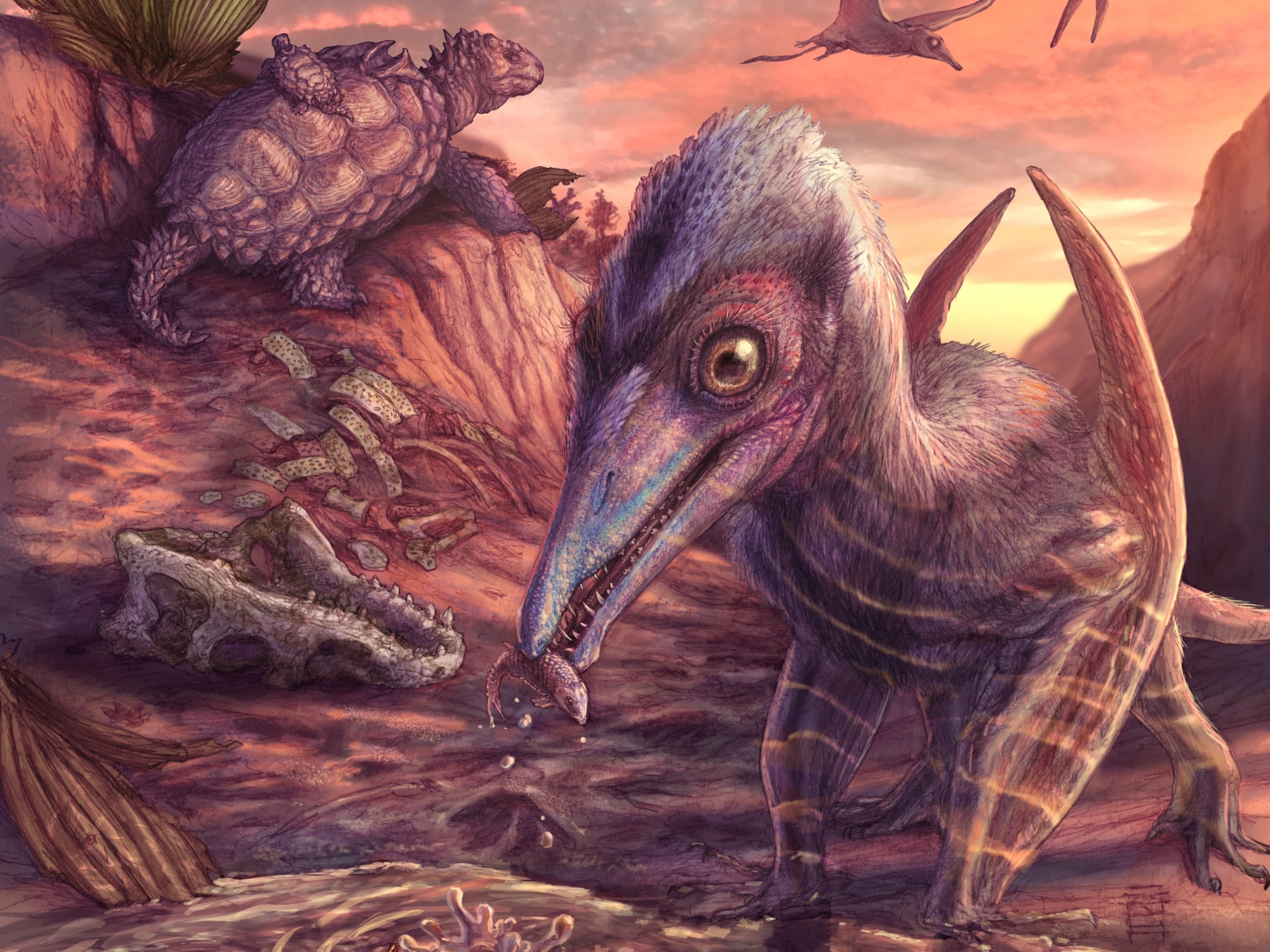
Ancient Winged Terror Was One of the Largest Animals to Fly
A new pterosaur found in Mongolia had a 32-foot wingspan and likely feasted on baby dinosaurs.
The fragmentary fossil of a truly enormous pterosaur has been found in the Gobi Desert of Mongolia. This formidable predator may have had a wingspan of 36 feet—close to the size a small aircraft and rivalling the largest winged reptiles known from Europe and North America.
The newly found giant lived 70 million years ago in a warm, inland habitat that was arid but not quite as dry as today. This late Cretaceous landscape was replete with dinosaurs, and their babies might have made ideal food for the huge carnivore, which could walk well on all fours and probably stalked its prey on the ground.
Part of a mysterious group known as the azhdarchids, the animal was probably one of the largest pterosaurs that ever lived, say the authors of a new report detailing the discovery in the Journal of Vertebrate Paleontology.
The team compares the creature to the two largest pterosaurs currently known: Quetzalcoatlus, found in Texas in the 1970s, and Hatzegopteryx, a stockier azhdarchid with a shorter neck found in Romania in the 1990s. (Also read about a cat-size pterosaur that stalked the late Cretaceous.)
Both of these pterosaurs had estimated wingspans of 32 to 36 feet. On the ground, they may have stood 18 feet high—about as tall as a large bull giraffe. There’s even a chance that the newfound animal was larger than these previously known winged behemoths, says Mark Witton, an expert on pterosaurs at the University of Portsmouth in the U.K.
The team has not yet named the Mongolian fossil as a new species, as its remains are so incomplete. But it does represent the first pterosaur of its size found in this part of the world.
“Although fragmentary, the specimen is from a gigantic individual … extending the geographic range of gigantic pterosaurs to Asia,” the scientists write.
Pterosaur Hunters
Palaeontologists discovered the fossil in 2006 in a fossil-rich locality known as Gurilin Tsav in the bleak, treeless expanse of the western Gobi. There, team member Buuvei Mainbayar of the Mongolian Academy of Sciences found part of the first vertebra and showed it to lead author Takanobu Tsuihiji at the University of Tokyo.
“I immediately recognized that it might be a pterosaur and was astonished at its gigantic size,” says Tsuihiji. “Straight away, we went back to the site and discovered the rest of the specimen.”
The fossil bones were so broken that they couldn’t interpret them at first. That took years of “puzzle work,” he says, that eventually yielded several backbones with the characteristic shape of vertebrae from azhdarchid pterosaurs. “I was very excited,” adds Tsuihiji.
“It’s a really big vertebra, and the only thing comparable is some material from Romania,” comments Witton, who was not involved in the new discovery. “This is definitely up there with the largest pterosaurs, and there’s nothing like it from Asia so far.”
One of the neck bones from a giant Jordanian azhdarchid called Aramabourgiania is just over two inches wide, he adds, while the same bone in the new Gobi pterosaur is nearly eight inches across. (See pictures of a toothed pterosaur found in Texas.)
“Whether that equates to a totally new size class of pterosaur is another question,” Witton says. “What we don’t have for these pterosaurs is the association of the neck bones with the body to confirm whether they just have much bigger necks, or whether they are much bigger animals.”
His gut feeling, however, is that although these thick-necked giants from Mongolia and Romania may have been a little heftier in overall weight, they would still have had wingspans in the 32- to 36-foot range, as that is approaching the size limit for flight in a pterosaur of this kind.
“It might have been this quite robust, formidable predator” capable of taking human-size prey, Witton suggests. “They seem to be feeding on things on the ground and are generalist in their ability to grab basically whatever they can fit in their beaks.”
The Gobi azhdarchid would not have been an apex predator, as Hatzegopteryx was in late Cretaceous Romania. That’s because the newfound pterosaur lived alongside Tarbosaurus, a relative of T. rex that weighed at least 5.5 tons. Luckily for the winged giant, it probably was not on the tyrannosaur menu—scientists think the azhdarchids could have catapulted themselves skyward from a standing start in a matter of seconds.
“There were probably easier things to catch,” Witton says. “It’s going to be difficult for a large predator to close that ground very quickly if they are ambushing them.”
Follow John Pickrell on Twitter.





